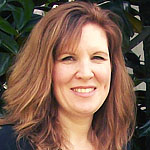Summary
Tara Brelinsky finally broke down and bought her first book on scheduling. Putting it on to practice taught her 3 key things in styling a family schedule.Milling around the homeschool bookstore with no clear goal in mind (which is generally a BIG mistake), my eyes were diverted this way and that by all the shiny, new textbooks and hands-on learning tools.
Titles, promising the perfect solution to every dilemma homeschooled students can muster, sucked me into the fantasy that my house could run like a well-oiled machine if only I would invest in the recipe divulged between the book covers.
I broke down under the pressure and bought a lovely book all about scheduling. Yes, we’ve been schooling for more than a decade, but still I figured we needed a better plan.
1. Appointed Hours
The author had fabulous ideas and worksheets which made me envious. “Oh, if I just print out her spreadsheets and fill in all of our names, everyone is gonna fall right in line,” I told myself.
According to the book, baby must nap every day at an appointed hour, thereby insuring Mama has uninterrupted time to devote to schooling siblings (perhaps I should have read that paragraph to my toddler who hasn’t napped consistently a day in his life).
“I can do this,” I told myself and gave the author’s advice a go, but somewhere after more than an hour of wailing (the baby, not me—although I came close), I lost my nerve and retrieved the toddler.
Yes, I could have tried to endure a few more days of torturous screaming midday to see if I could persuade my babe to stick to the prescribed plan.
Instead, I made peace with the fact that in his case I’m happier not trying to force this square peg into a round hole. The reality is that some of the author’s rigid formula was a bad fit in my household.
2. Rising Early
Over the years, I’ve learned to be flexible and to adjust our schedule to meet our needs. For example, at times I’ve awakened before my kids and enjoyed a bit of quiet time in prayer (which is also what the author of my new book prescribes).
However, currently my youngest has usually migrated into my bed during the dark of night and he rouses easily. The few times I’ve attempted to extricate my limbs from his clutches and rise before him have ended in dismal failure. I lost both sleep and my peaceful solitude.
Similarly, teaching children to rise early is helpful because it does train them for a traditional school format or employment situation, but if you suffer with health issues or you’ve spent the night tending to a newborn, then a strict start time of 8 am may not be the right plan for you at this point in your life.
3. One-on-One
I admit the author did inspire me to create individual time schedules for my younger children’s school day. Prior to reading her book, I often felt frustrated when two or three of my younger students required my help simultaneously, but in completely different subjects.
Just as soon as I would begin to assist my first grader with his math lesson, my third grader would beg for aid with his grammar lesson and my daughter would insist she couldn’t finish spelling without my immediate attention.
After reading the book, I decided to give each child a written schedule which was divided into thirty minute time blocks. I assigned a specific subject to each time slot and I added a block for one-on-one instruction with me.
Since math is typically the subject in which my attention is sought, I made sure to stagger everyone’s math so that it was assigned during their individual time with me. If my third grader found himself stumped by adjectives during his grammar slot, he was instructed to save his question until his fourth period when he had my complete attention.
That small adjustment did wonders toward bringing peace back to the school table. It helped my children to feel in control of their studies because the school day was broken down into manageable chunks with clear expectations of what needed to be done during each period. Knowing that they could count on me to be available for them on an individual basis for a set amount of time alleviated their frustrations (and mine).
Children really do thrive when they know what to expect and when to expect it.
Trying to homeschool (or even just raise a family) without a schedule is an invitation for chaos, but as my experience reminded me, the schedule that you set needs to suit your family’s personal style, as well as your current needs.

 Seton Magazine Catholic Homeschool Articles, Advice & Resources
Seton Magazine Catholic Homeschool Articles, Advice & Resources

